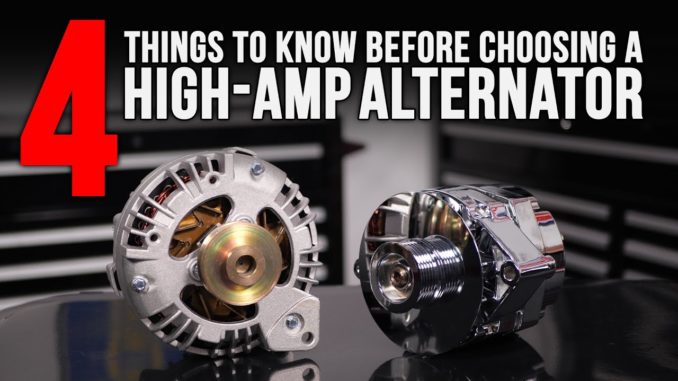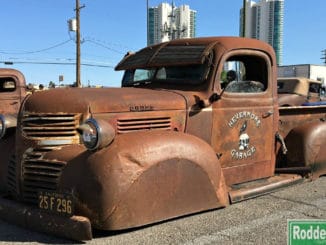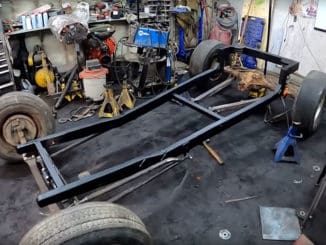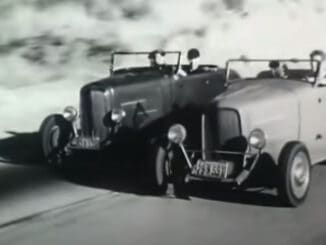
Generally, OEM alternators are rated between 65 to 100 amps and are capable of handling the factory power demands from systems like headlights, gauges, A/C, etc. Original equipment alternators also typically come with a 10 to 15 percent reserve to handle additional accessories.
Do You Need a High-Amp Alternator
There are several obvious signs that your current alternator is undersized. For example, dim headlights, sluggish starting, or an alternator that simply wears out too quickly.
You can also check your electrical load using an ammeter or estimate your vehicle’s electrical load by checking the accessory fuses. The amp ratings, although slightly higher than the highest draw of each component, will give you a good estimate of your load.
What Amperage Alternator Do You Need?
Determining the alternator amperage required is the current draw, plus any future accessories you plan to add.
Each accessory will have drastically different draw: an electric fuel pump can draw from 3 to 8 amps while a high-power audio amplifier can pull as much as 70 amps or more.
| Accessory | Draw |
| Lighting System | 4-6 Amps |
| Halogen Bulbs | = 10 Amps per bulb |
| Power Windows | 15-20 Amps * |
| Dash System | 2-4 Amps |
| Heat/Air Conditioning | 19-22 Amps |
| Electric Cooling Fans | 30-50 Amps |
| Audio System | 4-10 Amps |
| Audio Amplifiers | 15-250+ Amps |
| HEI Ignition | 10-12 Amps |
| Electric Water Pump | 18-25 Amps |
| Electric Fuel Pump | 8-10 Amps |
| Air Suspension Compressor | 20-50 Amps * |
* Intermittent draw.
As you calculate the total of your accessories draw, keep in mind that you can never really have too much amperage — amperage is basically the amount of electrical current your alternator can supply.
High-output alternators will not harm your components or charging system, no matter how high you go with the amps.
What Accessories Do You Need?
Although a high-amp performance alternator really doesn’t require much in the way of modifications, we do recommend that you replace both the ground straps and charge wire.
Keep in mind that the factory cables weren’t designed to handle the juice of a higher-output alternator, and can restrict the flow of electricity.
In the case of the charge wire, you really can’t go too large. Here is a chart with recommended cable length and gauge for your amp draw.
| Alternator Output (Amps) | 4 ft or less | 4-7 ft | 7-10 ft | 10-13 ft | 13-16 ft |
|---|---|---|---|---|---|
| 20 or less | 14 | 12 | 12 | 10 | 10 |
| 20-35 | 12 | 10 | 8 | 8 | 6 |
| 35-50 | 10 | 8 | 8 | 6 | 6 |
| 50-65 | 8 | 8 | 6 | 4 | 4 |
| 65-85 | 6 | 6 | 4 | 4 | 2 |
| 85-105 | 6 | 6 | 4 | 2 | 2 |
| 105-125 | 4 | 4 | 4 | 2 | 2 |
| 125-150 | 2 | 2 | 2 | 2 | 0 |
Alternator Pulley Ratio
Pulley ratio is a comparison between the crankshaft pulley diameter and alternator pulley diameter.
This ratio is derived by dividing the crank pulley diameter by the alternator pulley.
For example, a 6-inch crank pulley with 2-inch alternator pulley will yield a 3 to 1 pulley ratio.
Follow this common rule of thumb:
- Street Use = 3 to 1 ratio or slightly higher
- Drag Racing = 1.75 to 1 ratio
- Circle Track Racing = 1 to 1 ratio
4 Things To Know Before Choosing a High-Amp Alternator
Powermaster Performance put together an easy to understand PDF entitled How to Choose a Hot Rod Alternator that reiterates each of the points covered in this article.




